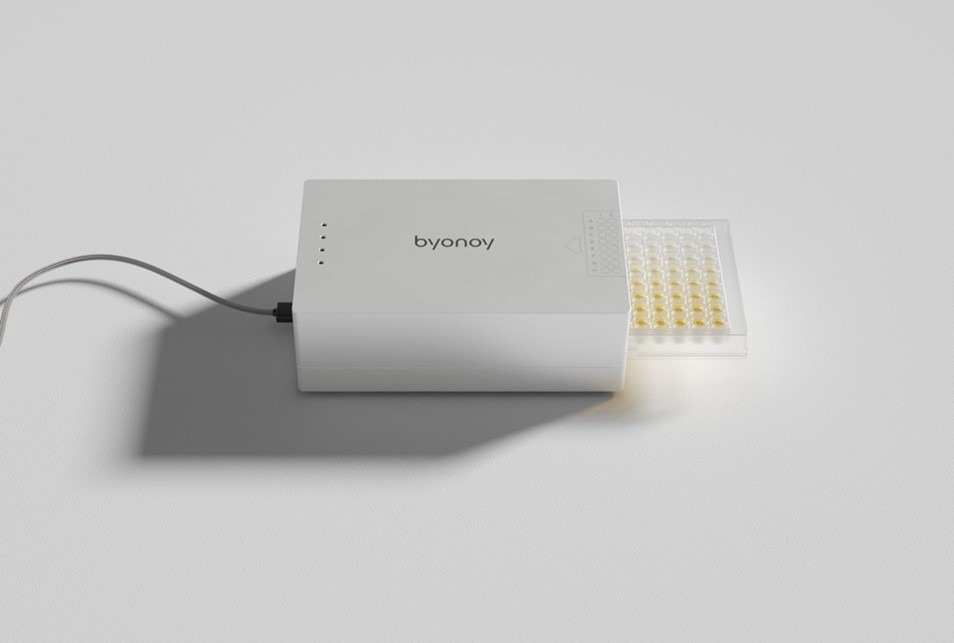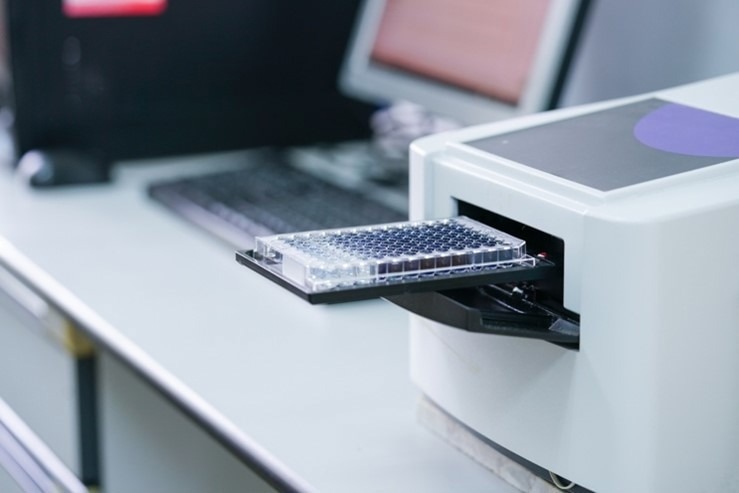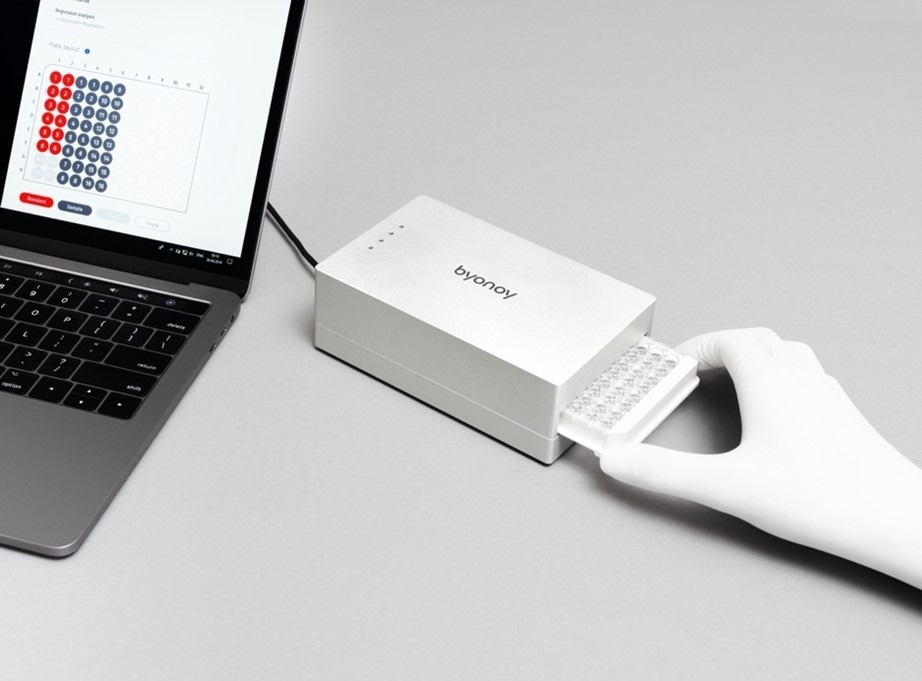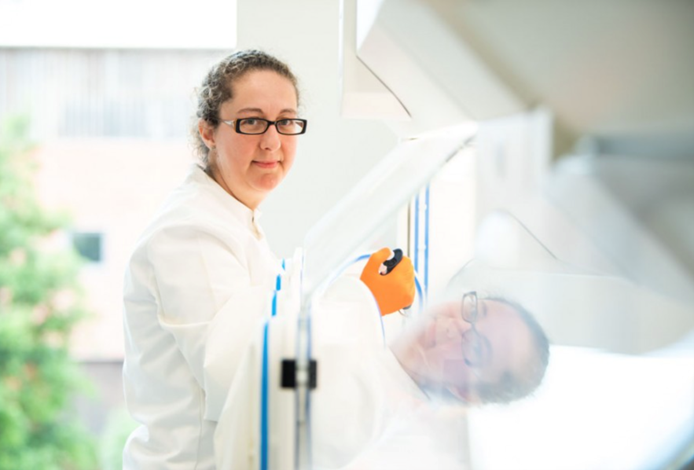Sponsored Content by ByonoyReviewed by Maria OsipovaApr 21 2023
Compactness is a well-known trend that has been present for many years in consumer goods and now it has also reached the world of laboratory equipment.
We’re all familiar with the pictures of people holding various devices and showing how tiny they are compared to their previous models. It's all about showcasing the compactness that we boast about. Let’s take an example of the evolution of computers that we are all familiar with. We started with big desktop computers, moving to laptops to tablets, and now pocket-sized smartphones. While the capabilities of all these devices are similar, although admittedly not identical, they differ radically in one aspect: footprint so, size not always matters!
The question is, how is the trend towards smaller devices being adopted in life science laboratories and how is it impacting laboratory workflows?
Let's start with the most famous examples of laboratory devices that have undergone the miniaturization transformation in the past decade such as the miniPCR devices and the MinION Nanopore sequencer. These devices were traditionally very large and required loads of space in the laboratory, but now they have been miniaturized to the level that can almost be mistaken as handheld instruments or gadgets. Fast forward, another jaw-dropping example is microplate readers that have also joined the miniaturization trend. While traditional plate readers are almost the size of a massive printer (right), however, if we take the example of the Absorbance 96 developed by the company Byonoy (left), it has a footprint scarcely larger than a 96-well microplate.


The trend of miniaturization in laboratories showing compact microplate reader by Byonoy (left) compared to the traditional massive plate readers (right) Image Credit: Byonoy
As we have seen by these examples this trend towards miniaturization is not only present in sequencers and thermal cyclers but also spans a wide range of other laboratory devices including microplate readers. Now the question arises, are these simply me-too products in a different form factor, or are these devices tapping into an important source of frustration in the lab and addressing specific pain points? Firstly, we must figure out why a compact design is important; do they differ only in size compared to their predecessors, and who is reaping the benefits from these miniaturized devices? So, in this article, I have tried to dive deep into this topic to list down some aspects where the miniaturization trend is life-changing.
No More Monopoly – Let’s Decentralize


A long waiting queue in front of a phone booth exemplifies the challenges of centralized systems (left). Decentralization at epitome by having own personal pocket-size smartphone (right). Image Credit: istock
One of the major benefits of miniaturized devices is exemplified in the concept of decentralization. We see this idea well-illustrated in the different photos above. Using the example of the telephone, let’s begin with the phone booth or phone box for our British readers. The phone booth is an example of a completely centralized infrastructure, i. e. we have many enthusiastic users for a single device. Even though you may be only a few miles away from your nearest phone booth, queuing up to use the phone can be a major bottleneck and the cause of your back pains. Moving on to the house telephone or landline, we gain the convenience and comfort of having a phone at multiple locations – saying goodbye to long wait lines at phone booths. We did not stop there, we miniaturized it even more and now we have modern smartphones, a truly decentralized system. The smartphone takes the phone out of the booth, out of the home, out of the backpack, and places it in the pocket of practically every human being on earth. It is a conversation in waiting, a communication device of the highest order, a truly decentralized piece of technology enabling each user to have access to their own personal device. And here, we reach the pinnacle of decentralization — no more frustrations while waiting in line at the phone booths or waiting for a family member to finally finish their call on the house phone. With this concept of decentralization, revolutionizing laboratory workflows are possible now, bringing marked improvements to the way things are done.
Decentralization in Laboratories
Having seen the example of the phone booth, by miniaturizing devices we are automatically solving the issue of having personal access. While most of the lab work is done at the “bench”, there are many laboratory processes that involve a phone-booth-esque interaction with centralized equipment. And most of these centralized types of equipment, particularly the more costly bits, are either available in a central or “nodal” lab or core facility that has a wide array of instruments (and the corresponding budget). These devices are then shared between multiple lab groups — welcome to the phone booth. To be fair, we have developed such centralized facilities due to specific issues: unaffordable costly devices owned by a specific lab group, the requirement of an outlet or an expert calibration if moved, and devices were often too large to house anywhere rather than at a central location with more space and less chaos than a laboratory workbench. However, this approach has a built-in bottleneck, like that of our phone booth example. Imagine, if someone decides to run a 3-day kinetics study in the microplate reader, which means no one can access the device during that time – that can be a real pain. Also, centralized workflows can create conflicts with the way many researchers prefer to work in their labs.
It’s often much more convenient to have your microplate reader on-site at your workstation or benchtop so you don’t need to seal your microplates for the journey of the quest to find one: if you’re lucky it may be in your adjacent lab, and if you’re unlucky an adjacent building. Even without too much physics, it’s possible to fold the space between these two points — and many labs are starting to do exactly that. It’s not uncommon that, despite having access to hundreds of thousands of dollars’ worth of equipment in a central lab, labs still end up purchasing a mini-PCR device or an Absorbance 96 microplate reader. The reason is that they can stow it away when it’s not in use, e. g. if they share their lab bench with another research group. Plus, it’s just much more convenient to have decentralized access to instrumentation. Just imagine if your vortex were somewhere in building C38 – might cause a nightmare. While decentralization is playing a central role in the transition to more compact devices, it isn’t the only important factor. Let's dig deeper!
Take it Easy – Making Research Uncomplicated
The second problem driving the transition to compact devices is the barrier to entry faced when dealing with many legacy instruments. Although it may not be obvious, larger, more cumbersome devices creates a cloud of anxiety, and usage complexity in the minds of many researchers — and for good reason. They are indeed often highly complex, starting with setting up the device in the laboratory and culminating in the “user experience”, which itself involves, for example, waiting for the device to warm up and trying to figure out the unintuitive touch screen. Not to forget, reading the 50-page technical manual with the sticky-note hints of users' past and the software that tests your programming skills “just a bit” can be complicated. Of course, I wouldn’t want to give the impression that these larger devices don’t have their place, as they do. They often offer more capabilities than their highly tailored counterparts, however, the long list of features is losing ground to the even longer list of pain points accumulating in many laboratories.

Plug-and-play data analysis software provides flexibility and a great user experience. The picture shows Byonoy's easy-to-use software. Image Credit: Byonoy
Seemingly, the approach of many device manufacturers in this space is to all but eliminate this barrier to entry. Not only they are focusing on having a small footprint and easy-to-use intuitive software for device operation. Cheery on the cake, if the devices can be digital and offer WIFI or USB connectivity, and they just work, without you needing to google around to find out which another lab group has it. Sometimes, devices can even be physically intimidating, they look less like any lab equipment rather more like an extraterrestrial UFO that you’re about to be invaded by. The user should have no qualms about using these instruments and should be thrilled with the user experience, even as the devices (really just the tools in the laboratory), fade into the background of what’s actually the most important – your experiment and research. This brings us to our last point.
Let’s Focus on Your Research
We have already explored two ways in which laboratory workflows are evolving due to the emergence of compact and intuitive devices — decentralization and user-friendliness. Last but not the least, compact instruments are changing the laboratory landscape through the flexibility inherent in their footprint. Taking an example of the Absorbance 96, the compact microplate reader, it has been used in a traditional benchtop setting but has also been implemented in space-restricted areas such as incubators or anaerobic chambers (an application that has become the explicit focus of other manufacturers such as the zenCELL Owl imaging system), or has even been taken into the field. The compact size and USB connectivity of the device mean it can be used in various ways that wouldn’t have been possible with traditional instruments. Whatever (and wherever) the application may be, you will have your own small, portable, decentralized, intuitive microplate reader to assist.

Researcher using the portable microplate reader (Byonoy – Absorbance 96) in an anaerobic chamber. Image Credit: Lablogic
In Summary
By being compact and less expensive than traditional solutions, modern instrumentation enhances accessibility - allowing each lab or even each workbench to have its own personal devices and benefit from the outstanding advantages of decentralized workflows. These miniaturized compact devices are very user-friendly with low barriers to entry with a high level of flexibility and convenience, streamlining various research applications and opening avenues for groundbreaking discoveries.
Of course, the key component and driver of such innovations in laboratory equipment are the people who are willing to take a chance on unknown companies and unknown products. Innovators and early adopters who recognize the value and are immediately excited about the unlimited prospects of a unique compact instrument. Researchers who are open to innovation, open to adopting new products, and willing to question the mundane. The incessant search for better solutions and better ways to perform their experiments. I’m sure we can all benefit from this mindset in one way or another and can find new ways to disrupt our current patterns of thought and action to propel our research into the next phase.
About Byonoy
The Byonoy GmbH was founded in 2015 as a spin-off from the University of Kiel and is situated in Hamburg. Our core competence is to develop innovative microplate readers based on photometric measurements for laboratory use.
Our aim is to facilitate the research and development process, to give researchers new opportunities, and to make the advantages of advanced biotechnological methods accessible to a broad range of laboratories.
For the realization of a successful innovation process, our network is a crucial factor. Our partners help us to realize our ideas and we are glad to share our expertise with them.
Sponsored Content Policy: News-Medical.net publishes articles and related content that may be derived from sources where we have existing commercial relationships, provided such content adds value to the core editorial ethos of News-Medical.Net which is to educate and inform site visitors interested in medical research, science, medical devices and treatments.